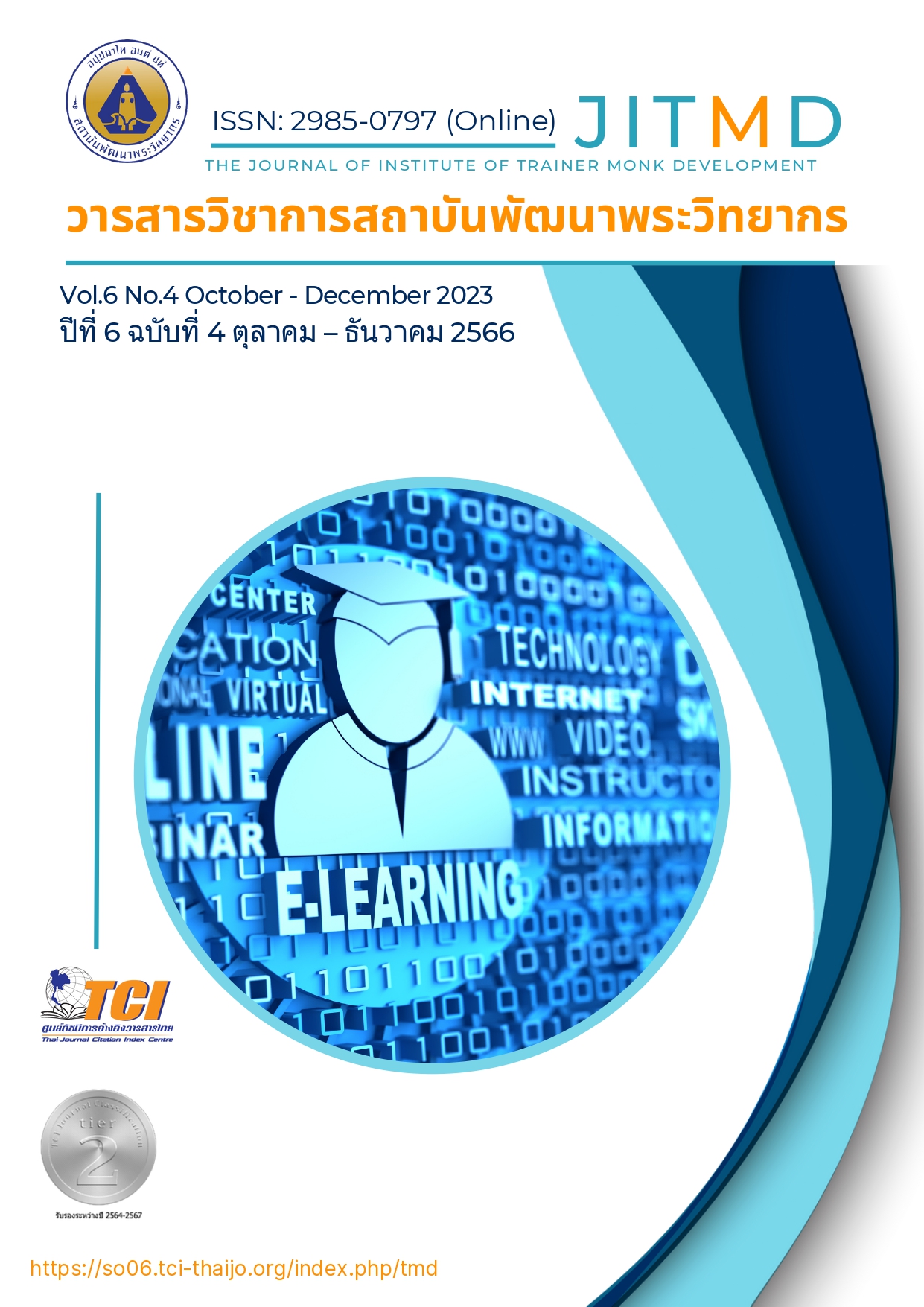Development of Mathematical Problem Solving and Reasoning Abilities “Addition, Subtraction, Multiplication, Division decimal” by Learning Emphasized Heuristics Thinking with Numbered Heads Together of Primary 6 students at Wattalaybok School (Luangpor Beaw – Sutabud Uppatham)
Main Article Content
Abstract
The research aimed to: 1) compare the learning achievements in mathematics before and after learning emphasized heuristics thinking with numbered heads together and the achievement after learning with 70 percent criterion 2) compare the problem solving abilities of students after learning emphasized heuristics thinking with numbered heads together with 70 percent criterion 3) compare the mathematical reasoning abilities of students after learning emphasized heuristics thinking with numbered heads together with 70 percent criterion and 4) study the satisfaction of the students towards the learning emphasized heuristics thinking with numbered heads together. The statistics used for data analysis were: mean, percentage, standard deviation, t-test for dependent samples and t-test for one sample. The sample group consisted of 20sixth-grade students at Wattalaybok School (Luangpor Beaw – Sutabud Uppatham), derived by cluster random sampling. The research instruments were: 1) lesson plans 2) an achievement test 3) an ability test on problem solving and mathematical reasoning abilities and 4) a satisfaction assessment form. The results showed that: 1) the students’ learning achievement after learning emphasized heuristics thinking with numbered heads together was higher than that of before and then 70 percent criterion with statistical significance at .05 2) the students’ problem solving after learning was higher than 70 percent criterion at significant level .05 3) the students’ mathematical reasoning ability after learning was higher than 70 percent criterion at significant level .05 and 4) the level of satisfaction from the student as a whole was the highest level.
Article Details

This work is licensed under a Creative Commons Attribution-NonCommercial-NoDerivatives 4.0 International License.
บทความที่ได้รับการตีพิมพ์เป็นลิขสิทธิ์ของวารสารวิชาการสถาบันพัฒนาพระวิทยากร
ข้อความที่ปรากฎอยู่ในบทความที่ได้รับการตีพิมพ์ในวารสาร ถือเป็นความรับผิดชอบของผู้เขียนบทความ และข้อคิดเห็นนั้นไม่ถือว่าเป็นทัศนะและความรับผิดชอบของกองบรรณาธิการวารสารวิชาการสถาบันพัฒนาพระวิทยากร
References
ธนะ จิตต์กระจ่าง. (2564). การศึกษาผลสัมฤทธิ์ทางการเรียนวิชาคณิตศาสตร์ ของนักเรียนชั้นมัธยมศึกษาปีที่ 4 โรงเรียนคงทองวิทยา โดยใช้การสอนแบบอุปนัยร่วมกับเทคนิคร่วมกันคิด(NHT) เรื่องตรรกศาสตร์. วิทยานิพนธ์วิทยาศาสตรมหาบัณฑิต. มหาวิทยาลัยศิลปากร.
นิยูสนี อามะ. (2556). การศึกษาผลสัมฤทธิ์ทางการเรียนวิชาคณิตศาสตร์และความสามารถในการแก้ปัญหาของนักเรียนชั้นประถมศึกษาปีที่ 6 เรื่องบทประยุกต์ โดยการใช้ฮิวริสติกส์ โรงเรียนอนุบาลปัตตานี. วิทยานิพนธ์ศาสตรมหาบัณฑิต. มหาวิทยาลัยเกษตรศาสตร์.
เรวดี มีสุข. (2556). ผลการจัดการเรียนรู้โดยเน้นการคิดแบบฮิวริสติกส์ (Heuristics) ที่มีต่อผลสัมฤทธิ์ทางการเรียน ความสามารถในการแก้ปัญหาและความสามารถในการให้เหตุผลทางคณิตศาสตร์ เรื่องเศษส่วนของพหุนาม ของนักเรียนชั้นมัธยมศึกษาปีที่ 3. การศึกษามหาบัณฑิต. มหาวิทยาลัยศรีนครินทรวิโรฒ.
วันเพ็ญ จันทร์เจริญ. (2542). การเรียนการสอนปัจจุบัน. สกลนคร: สถาบันราชภัฏสกลนคร.
สถาบันส่งเสริมการสอนวิทยาศาสตร์และเทคโนโลยี (สสวท.). (2560). การจัดสาระการเรียนรู้กลุ่มวิทยาศาสตร์หลักสูตรการศึกษาขั้นพื้นฐาน. กรุงเทพฯ: สถาบันส่งเสริมการสอนวิทยาศาสตร์และเทคโนโลยี.
อรีนา ปัดตาล. (2562). การพัฒนาทักษะการแก้ปัญหาคณิตศาสตร์ เรื่องการเรียงสับเปลี่ยน ที่เน้นการคิดแบบฮิวริสติกส์ร่วมกับเทคนิคเพื่อนคู่คิด ของนักเรียนชั้นมัธยมศึกษาปีที่ 6. วิทยานิพนธ์ศาสตรมหาบัณฑิต. มหาวิทยาลัยศิลปากร.
Yen, F. (1986). An intervention study in mathematical problem solving among selected junior high school students. (Heuristics, math tutoring, self-efficacy).


